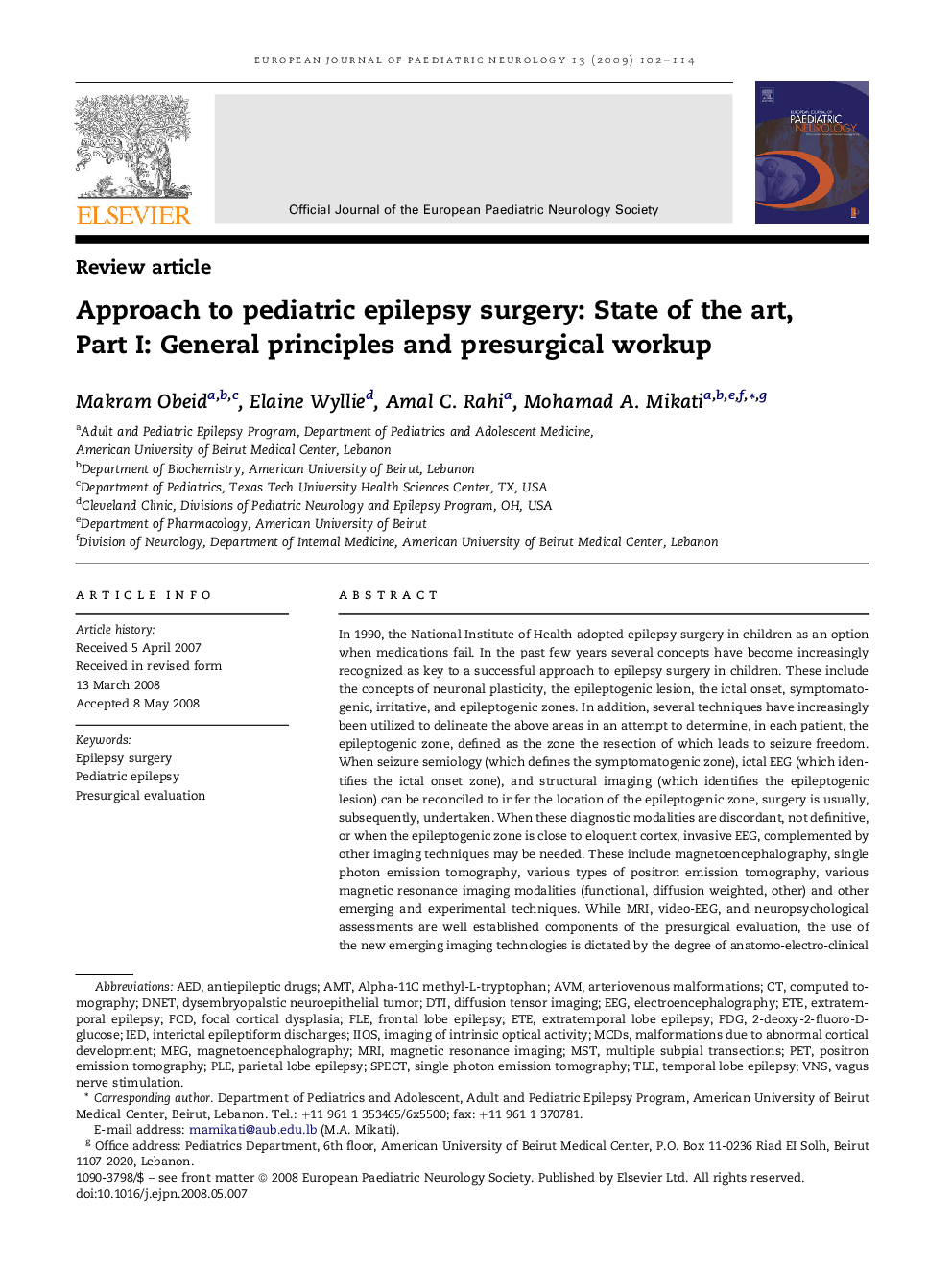| Article ID | Journal | Published Year | Pages | File Type |
|---|---|---|---|---|
| 3054617 | European Journal of Paediatric Neurology | 2009 | 13 Pages |
In 1990, the National Institute of Health adopted epilepsy surgery in children as an option when medications fail. In the past few years several concepts have become increasingly recognized as key to a successful approach to epilepsy surgery in children. These include the concepts of neuronal plasticity, the epileptogenic lesion, the ictal onset, symptomatogenic, irritative, and epileptogenic zones. In addition, several techniques have increasingly been utilized to delineate the above areas in an attempt to determine, in each patient, the epileptogenic zone, defined as the zone the resection of which leads to seizure freedom. When seizure semiology (which defines the symptomatogenic zone), ictal EEG (which identifies the ictal onset zone), and structural imaging (which identifies the epileptogenic lesion) can be reconciled to infer the location of the epileptogenic zone, surgery is usually, subsequently, undertaken. When these diagnostic modalities are discordant, not definitive, or when the epileptogenic zone is close to eloquent cortex, invasive EEG, complemented by other imaging techniques may be needed. These include magnetoencephalography, single photon emission tomography, various types of positron emission tomography, various magnetic resonance imaging modalities (functional, diffusion weighted, other) and other emerging and experimental techniques. While MRI, video-EEG, and neuropsychological assessments are well established components of the presurgical evaluation, the use of the new emerging imaging technologies is dictated by the degree of anatomo-electro-clinical correlations, and, awaiting multicentric studies and more detailed guidelines, remains center-dependent.
